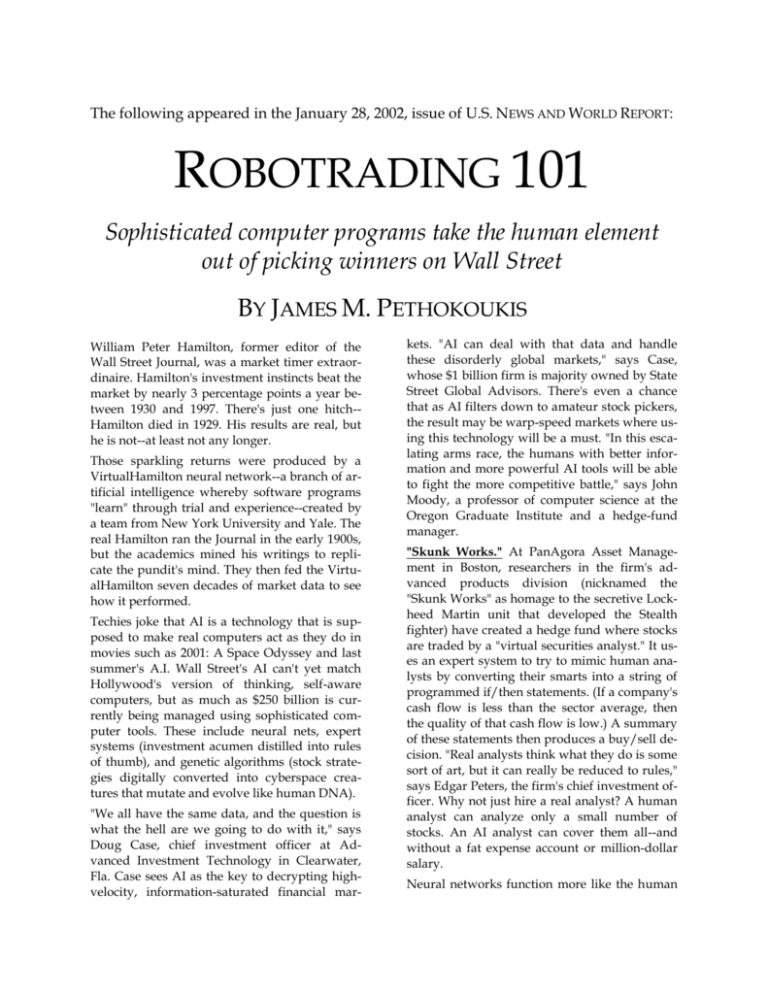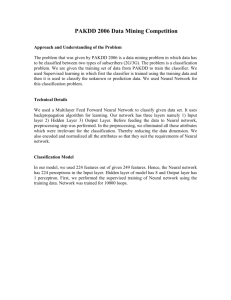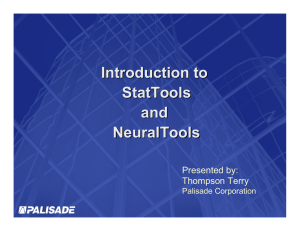108
advertisement

The following appeared in the January 28, 2002, issue of U.S. NEWS AND WORLD REPORT: ROBOTRADING 101 Sophisticated computer programs take the human element out of picking winners on Wall Street BY JAMES M. PETHOKOUKIS William Peter Hamilton, former editor of the Wall Street Journal, was a market timer extraordinaire. Hamilton's investment instincts beat the market by nearly 3 percentage points a year between 1930 and 1997. There's just one hitch-Hamilton died in 1929. His results are real, but he is not--at least not any longer. Those sparkling returns were produced by a VirtualHamilton neural network--a branch of artificial intelligence whereby software programs "learn" through trial and experience--created by a team from New York University and Yale. The real Hamilton ran the Journal in the early 1900s, but the academics mined his writings to replicate the pundit's mind. They then fed the VirtualHamilton seven decades of market data to see how it performed. Techies joke that AI is a technology that is supposed to make real computers act as they do in movies such as 2001: A Space Odyssey and last summer's A.I. Wall Street's AI can't yet match Hollywood's version of thinking, self-aware computers, but as much as $250 billion is currently being managed using sophisticated computer tools. These include neural nets, expert systems (investment acumen distilled into rules of thumb), and genetic algorithms (stock strategies digitally converted into cyberspace creatures that mutate and evolve like human DNA). "We all have the same data, and the question is what the hell are we going to do with it," says Doug Case, chief investment officer at Advanced Investment Technology in Clearwater, Fla. Case sees AI as the key to decrypting highvelocity, information-saturated financial mar- kets. "AI can deal with that data and handle these disorderly global markets," says Case, whose $1 billion firm is majority owned by State Street Global Advisors. There's even a chance that as AI filters down to amateur stock pickers, the result may be warp-speed markets where using this technology will be a must. "In this escalating arms race, the humans with better information and more powerful AI tools will be able to fight the more competitive battle," says John Moody, a professor of computer science at the Oregon Graduate Institute and a hedge-fund manager. "Skunk Works." At PanAgora Asset Management in Boston, researchers in the firm's advanced products division (nicknamed the "Skunk Works" as homage to the secretive Lockheed Martin unit that developed the Stealth fighter) have created a hedge fund where stocks are traded by a "virtual securities analyst." It uses an expert system to try to mimic human analysts by converting their smarts into a string of programmed if/then statements. (If a company's cash flow is less than the sector average, then the quality of that cash flow is low.) A summary of these statements then produces a buy/sell decision. "Real analysts think what they do is some sort of art, but it can really be reduced to rules," says Edgar Peters, the firm's chief investment officer. Why not just hire a real analyst? A human analyst can analyze only a small number of stocks. An AI analyst can cover them all--and without a fat expense account or million-dollar salary. Neural networks function more like the human brain. They can compare existing stock-trading patterns with previous situations and eventually "learn" what works and what doesn't as the program digests more data. Unlike traditional financial models, neural nets capture interconnections among financial variables. At Case's AIT, neural nets search out linkages between stock performance and variables such as price momentum, free cash flow, and the state of the overall economy. verse engineering," says Yale finance professor William Goetzmann. "And I suspect it is scaring some managers away from using a single broker who can view all of their trades." Using available information, Goetzmann himself has been attempting to reverse engineer the decisions made by managers of some unnamed mutual funds. "The idea being to see what makes managers trade, what signals they use, and if there is a magic formula," he says. AIT's neural nets have discovered, for instance, that with some stocks, the price-earnings ratio is a key indicator of its future return during good economic times. But when the economy is slowing, the stock's price momentum becomes more critical. Gaming company Aztar is one of AIT's largest positions. With low inflation and a steepening yield curve (a widening gap between short- and long-term interest rates), AIT's models show valuation and price patterns for the stock similar to those that have been bullish in the past. AIT's AllCap large-stock portfolio has beaten the overall market by an average of 3 percentage points a year since 1999. Those strong, though not otherworldly, results back up Case's cautionary contention that while AI is a formidable investing tool, "it's not some holy grail." Math whiz. If there's a wild card in this investing arms race, it may be FatKat. The company may sound like a villain in a James Bond flick, but it's really a fledgling investment firm in Wellesley, Mass., founded by inventor and AI evangelist Ray Kurzweil. Although he's currently mum on FatKat, Kurzweil has written about the potential of mathematical formulas known as genetic algorithms to beat the market. The Darwinist process would begin with software randomly generating a million sets of rules for buying and selling stocks. Each set is a financial organism with the rules constituting its DNA. The ones that can't beat the market are killed, while the stock-savvy survivors mutate and breed until the population is back to a million. Rinse and repeat 100,000 times. "The surviving software creatures should be darn smart investors," he writes in The Age of Spiritual Machines. Still, the results can sometimes be astounding. Standard & Poor's uses a neural net to compile its Neural Fair Value 20 portfolio--available in its Outlook newsletter for $19.50 a month-which gained 29 percent last year, compared with a 13 percent loss for the S&P 500. The network constantly looks back six months to find the factors that seem to affect stock prices to predict the best performers over the next six months. Among the stocks in the portfolio are Computer Associates, PacifiCare Health Systems, and Tommy Hilfiger. How smart might AI programs get? By the year 2050, perhaps, investment software programs may be able to "come up with their own investment hypotheses, test them out, and implement them," says Andrew Lo, director of MIT's Laboratory for Financial Engineering. For now, though, humans still have a big role to play in the AI investment process. While the numbers are being crunched, the world keeps spinning and you need humans to keep track of it. At AIT, it takes all weekend to download data and update investment models. You also need humans to monitor the world for events that aren't reflected immediately in the data, such as terrorist attacks. And what happens if supersmart computers eventually get so good at the prediction game that all investors are made of silicon rather than carbon? Then the computers, as Kurzweil puts it, "will be trying to outpredict each other." The VirtualHamilton presents a more tantalizing use of the technology. Why not also a VirtualBuffett or VirtualLynch? These digital doppelgangers might beat the originals by quantifying the unconscious intuition of these fabled investors. Just as an Ichiro Suzuki doesn't run trajectory and velocity calculations before catching a fly ball, many managers probably don't fully understand how they analyze stocks. Digitize a superstar manager's moves, and you might be able to hack his financial mind. "That's called re- 2







